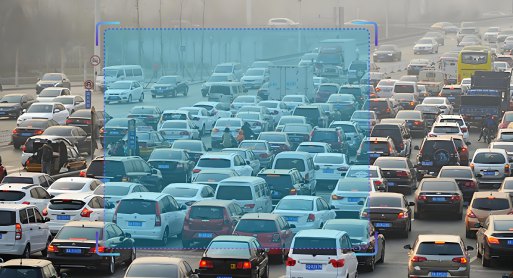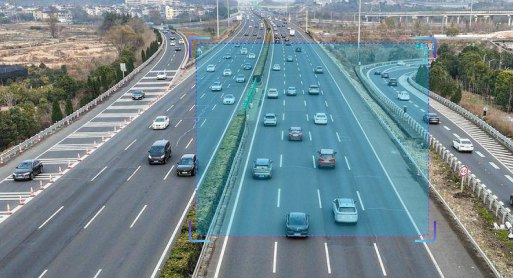
Lane-Level Traffic Flow Detection

Algorithm Introduction
For designated smart surveillance regions (ROIs) within urban jurisdictions, this system employs a lane traffic flow model to automatically record location coordinates, spatiotemporal data, and vehicle passage metrics for vehicles detected within specified monitoring zones on urban motor vehicle lanes. Specifically designed for road-mounted video equipment, the system utilizes advanced lane flow detection algorithms to quantify traffic volume on urban roadways.
Application Value
-

Urban Arterial Roads & Transportation Hubs
Camera-equipped AI algorithms perform real-time lane-level traffic flow detection -

Provides traffic authorities with data support to optimize signal timing and alleviate congestion
-

Expressways & Toll Station Areas
Lane flow detection algorithms generate statistical traffic data -

Enables dynamic traffic regulation to enhance throughput efficiency
FAQ
-
Algorithm AccuracyAll algorithms published on the website claim accuracies above 90 %. However, real-world performance drops can occur for the following reasons:
(1) Poor imaging quality, such as
• Strong light, backlight, nighttime, rain, snow, or fog degrading image quality
• Low resolution, motion blur, lens contamination, compression artifacts, or sensor noise
• Targets being partially or fully occluded (common in object detection, tracking, and pose estimation)
(2) The website provides two broad classes of algorithms: general-purpose and long-tail (rare scenes, uncommon object categories, or insufficient training data). Long-tail algorithms typically exhibit weaker generalization.
(3) Accuracy is not guaranteed in boundary or extreme scenarios.
-
Deployment & InferenceWe offer multiple deployment formats—Models, Applets and SDKs.
Compatibility has been verified with more than ten domestic chip vendors, including Huawei Ascend, Iluvatar, and Denglin, ensuring full support for China-made CPUs, GPUs, and NPUs to meet high-grade IT innovation requirements.
For each hardware configuration, we select and deploy a high-accuracy model whose parameter count is optimally matched to the available compute power.
-
How to Customize an AlgorithmAll algorithms showcased on the website come with ready-to-use models and corresponding application examples. If you need further optimization or customization, choose one of the following paths:
(1) Standard Customization (highest accuracy, longer lead time)
Requirements discussion → collect valid data (≥1 000 images or ≥100 video clips from your scenario) → custom algorithm development & deployment → acceptance testing
(2) Rapid Implementation (Monolith:https://monolith.sensefoundry.cn/)
Monolith provides an intuitive, web-based interface that requires no deep AI expertise. In as little as 30 minutes you can upload data, leverage smart annotation, train, and deploy a high-performance vision model end-to-end—dramatically shortening the algorithm production cycle.






